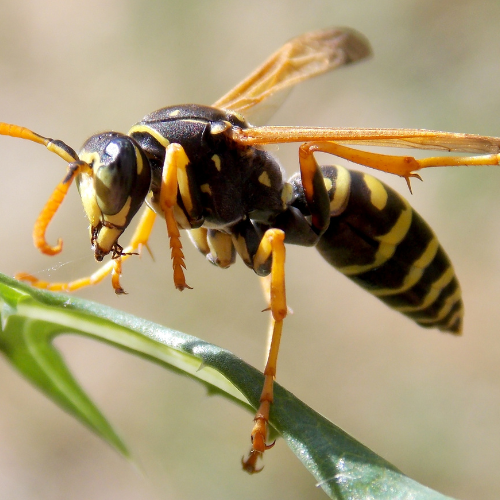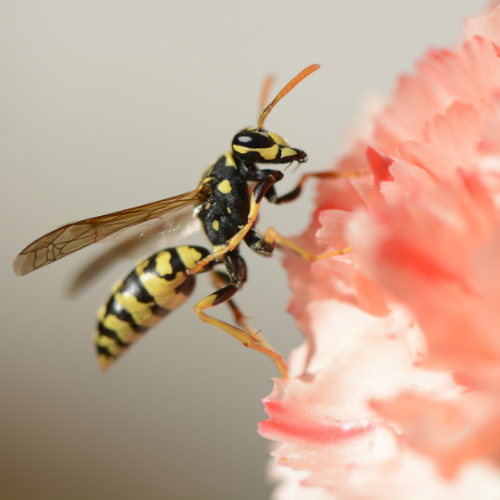Paper Wasps
Introduction to
Paper wasps are known for their distinctive nests and beneficial role in controlling garden pests. However, their stings can be painful, and their nests near human habitation can pose a problem. This guide provides detailed information on how to recognize, understand, and manage paper wasps, including preventive measures and professional pest control solutions.
Recognition
Paper wasps (Polistes spp.) are medium to large-sized wasps, typically measuring between 3/4 to 1 inch in length. They have slender bodies with narrow waists, long legs, and wings that fold lengthwise when at rest. Their coloration can vary, but they are generally brown with yellow or reddish markings. Paper wasps are often mistaken for other wasps, but they can be distinguished by their distinctive nests, which are open and umbrella-shaped, made of a papery material.
Biology
Paper wasps belong to the family Vespidae and are social insects that live in colonies. A typical colony consists of a queen and several workers. The queen starts the nest in spring, laying eggs that hatch into larvae. The workers take over nest building and foraging duties, feeding the larvae with chewed-up insects. Paper wasps go through complete metamorphosis, developing from eggs to larvae to pupae to adults. Unlike some other wasps, paper wasps do not produce large colonies; their nests usually contain fewer than 100 individuals.
Habits
Paper wasps are beneficial insects because they help control garden pests, such as caterpillars and beetle larvae. They are generally non-aggressive unless their nest is threatened. Paper wasps build their nests in sheltered areas, such as under eaves, in attics, or on tree branches. They prefer locations that provide protection from the elements and are close to food sources. Paper wasps are most active during the warmer months and die off in the fall, with only the fertilized queens overwintering to start new colonies in the spring.
Prevention
Preventing paper wasp infestations involves making your property less attractive to these wasps and regularly removing nests. Start by inspecting your property regularly for paper wasp nests and removing them before they become established. Use a long-handled tool or a professional pest control service to safely remove nests. Seal cracks, gaps, and other potential entry points in walls, ceilings, and around windows and doors to prevent wasps from entering structures to build nests. Reduce the availability of food sources by keeping outdoor trash bins tightly sealed and cleaning up food and drink spills promptly. Minimize sheltered areas where paper wasps might build nests by keeping eaves, porches, and attics clear of debris and clutter. By taking these preventive measures, you can significantly reduce the likelihood of paper wasp infestations and protect your property from these stinging insects.
Professional
When paper wasps become a persistent problem, professional pest control services can offer effective solutions. STL Pest Control provides comprehensive inspections and tailored treatment plans to address paper wasp infestations. Their methods include safely removing nests, using insecticides if necessary, and implementing preventive measures to deter future nesting. Professional services ensure that the infestation is managed efficiently and safely, minimizing the risk to humans and pets while respecting the beneficial role of paper wasps in controlling other pests.



Our Office









